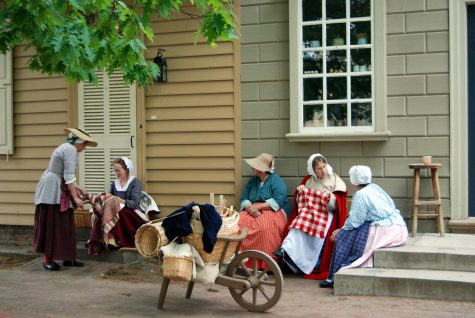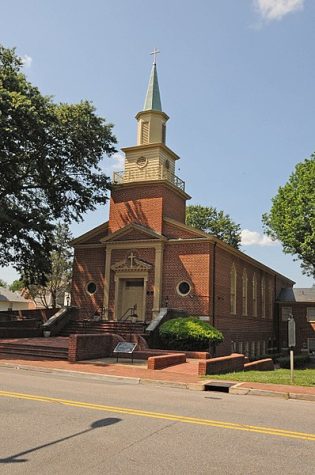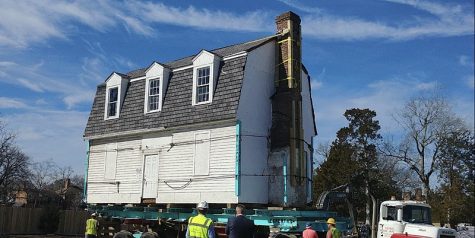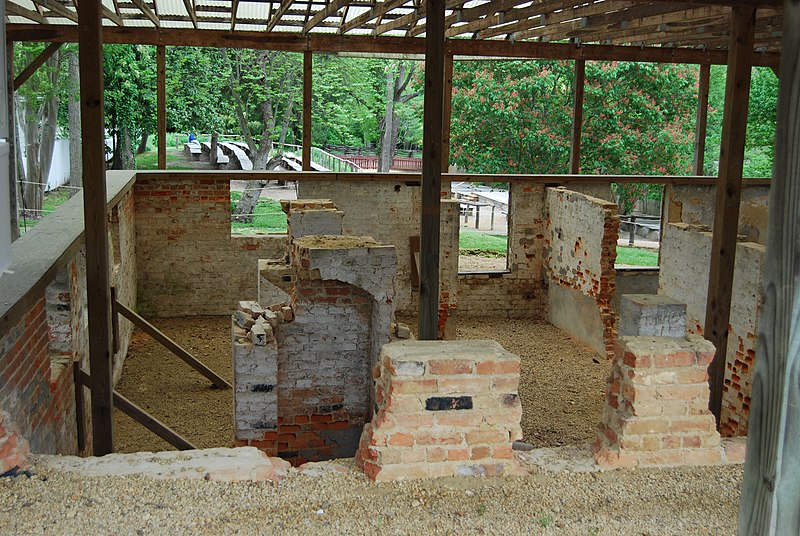First Baptist Church: Past, Present, and Future
Archaeological digs have been happening in Colonial Williamsburg for years, but recent discoveries may lead to the renovation of this iconic Revolution-era church.
Harvey Barrison from Massapequa, NY, USA, CC BY-SA 2.0
The Colonial Williamsburg Foundation prides itself in its historical accuracy, resulting in renovations such as these.
The First Baptist Church is a sight that can’t be missed when visiting the historic Williamsburg area. Looking almost out-of-place next to the line of shops and restaurants that have appeared over the years, the beautiful brick building catches the eyes of passers-by as they walk down the sidewalk. The iconic black-and-white sign near its entrance attracts the attention of history buffs, boasting that Dr. Martin Luther King Jr. himself stood on the church’s steps and spoke in 1962. Not many people know the story behind First Baptist, but with a recent donation to the church’s renovation project, that may soon change.

Colonial Williamsburg is a staple in Virginia’s history. The pre-revolution-style park attracts hundreds of thousands of tourists every year from around the world, making millions of dollars, the peak of the iceberg being over $148 million in 2021, according to Zippia. Colonial Williamsburg, affectionately nicknamed “CW” by locals, is a beautiful historical landmark that is filled to the brim with experiences, stories, and actors to teach tourists about the state’s beginning, not to mention the many species of animals and plants that contribute to the natural environment. The park also strives to be as accurate to the original setting as possible, resulting in renovations and archaeological expeditions.

According to its official website, the First Baptist Church, aptly named, was founded in 1776 by a group of slaves and free Black people who desired to worship freely in Virginia. The secret church was first led by Reverend Moses, who preached to members of the church at Green Spring Plantation, which was located about five miles west of the original site of Williamsburg. Five years later, in 1781, the church was officially organized as Baptist under Reverend Gowan Pamphlet, who was enslaved at the time he began preaching. Members of the church then moved to Raccoon Chase, which was just two miles away from the current location of the King’s Arms Tavern, before the wealthy Cole family, moved by the church’s determination, offered Pamphlet the use of their carriage house for worship. During the Civil War, the church’s brick structure was built near the original carriage house in 1856, being named the First Baptist Church seven years later, then in 1956 being moved to its current location on Scotland Street.
In 2020, the Colonial Williamsburg Foundation began an archaeological expedition on the church with intent to discover artifacts as well as the building’s original site. As of this February, not only have workers discovered the original structure, but also over 60 burial sites. At the moment, three of these sites are going under investigation to discover more information on who could’ve been buried in them. According to the CWF, after the construction on the church is completed, the first meeting house will also be reconstructed, as well as the introduction of an interpretive staff to the church.

The greatest contributor to the reconstruction and renovation of the First Baptist Church has been the Lilly Endowment Religion and Cultural Institutions Initiative. The foundation made a $2.5 million donation in 2020, and most recently, a grant of $3 million to the expedition. As Reverend James Ingram, who will be portraying Rev. Pamphlet in the church’s interpretation staff, said in a WFXR News article, “Lilly Endowment’s wonderful commitment to supporting interpretive staff will ensure that the history and many of the remarkable stories of First Baptist Church’s early years are shared with Colonial Williamsburg visitors for generations to come. The stories of Rev. Pamphlet and the First Baptist Church congregation provide critical lessons about the nation’s religious history.” Lilly Endowment has also agreed to grant the CWF another $1 million if the foundation also is able to raise that same amount by October 31 of 2023.

Jack Gary, Colonial Williamsburg’s archaeology director, says that the CWF is “getting close to the finish line,” as according to a quote in 13 News. This same news crew has been following the discovery project since the foundation of the original church was discovered under a parking lot in 2021. Other foundations of the church have also been discovered, dating back to the 1800s.
The rediscovery and rebuilding of this historic church will not only alter the landscape of Colonial Williamsburg for the better, but may also bring awareness to the history of religion in its past, especially within minorities of the colonies. There are many churches of many different branches in the Colonial Williamsburg area, but none are leaving quite the same mark on early Virginian history as the First Baptist Church.




